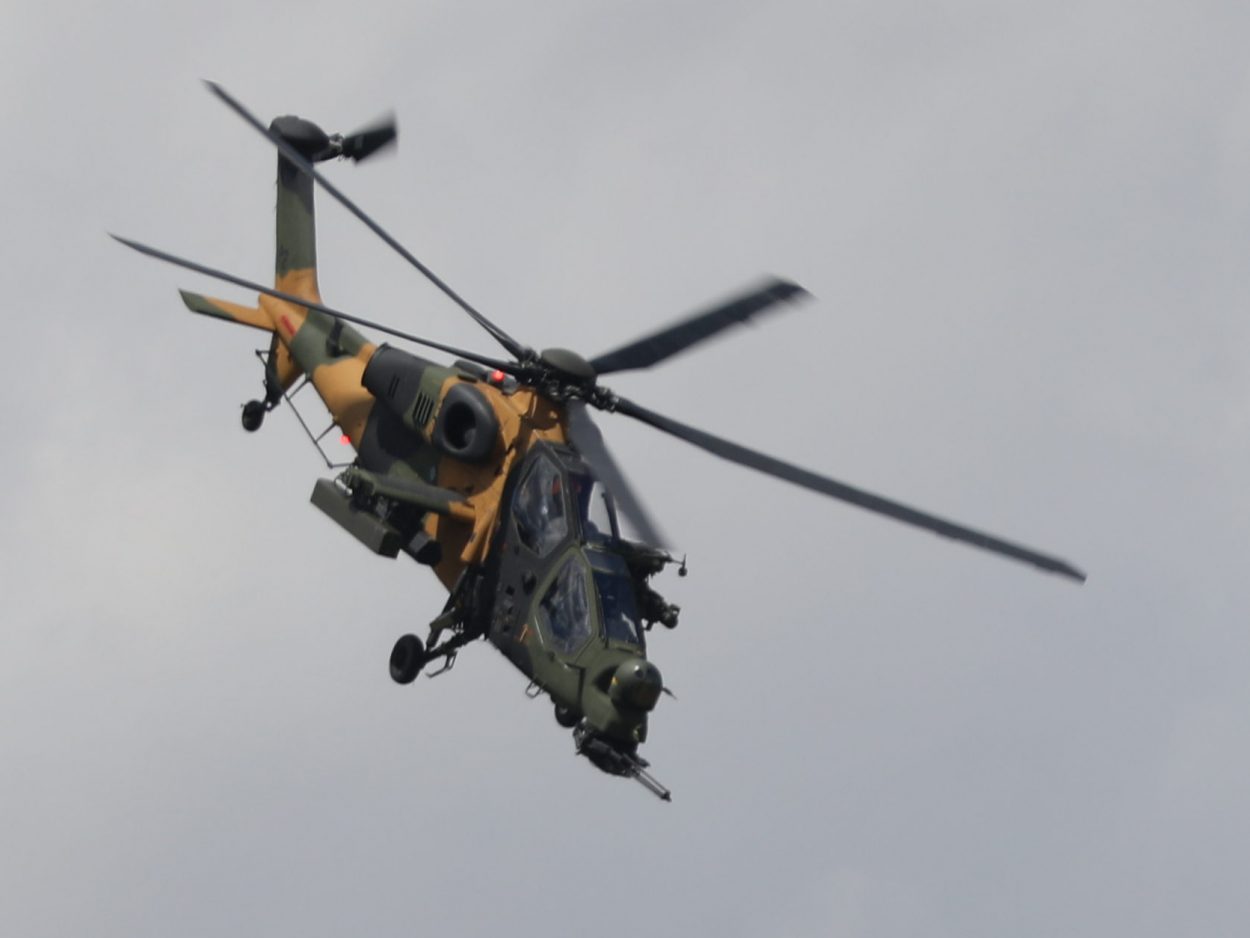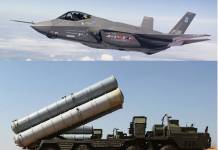A video on the Russian defense aerospace news website shows a Turkish T-129 ATAK attack helicopter in thermal footage being shot down and finally going down in flames.
The Turkish ATAK choppers are derivatives of AgustaWestland A129 Mangusta, furnished with indigenous Turkish avionics and weapon systems. It is a next-gen, twin-seat, twin-engine helicopter developed for attack and reconnaissance missions.
The helicopter is in service with the Turkish Army and other armed services of the country, including the Turkish Gendarmerie.
The report claims it was Iraqi and Syrian Kurdish fighters attempting to shoot down the helicopter with anti-aircraft guns when a next grainier video shows what appears to be the rotorcraft going down in flames.
The video begins with thermal footage, possibly from an electro-optical system, and a reticule showing the ATAK helicopter flying a straight path from right to left. Then, we hear loud bursts from a large gun with the reticule shaking upon each shot.
But the bursts are not continuous, rapid firing but spaced in single shots, which throws up the first significant doubt.
No anti-aircraft gun, even with non-state actors like the Kurdistan Workers Party (PKK), fires so slowly. The best guess could be a large caliber semi-automatic rifle used to shoot at the helicopter, which surprisingly doesn’t seem to be taking any evasive maneuvers.
This is the second significant anomaly. Faced with anti-aircraft (‘ack ack’ in military parlance), all rotary and fixed-wing aircraft fly erratically to avoid being hit. If a gun fired at it, the pilot would have pulled up and flown higher to stay out of the gun’s range.
Then the next part of the video, again in thermal mode, shows two ATAK gunships flying from left to right, one behind the other in a low-level plain straight path.
Another larger crosshair/reticule from the camera records sounds of another lighter gun firing in semi-automatic mode. We then hear fully automatic bursts, which again sound lighter and milder, indicating it is not a heavy weapon but a small arm, like an assault rifle. The helicopters also don’t seem bothered by the firing and keep flying.
The video then progresses to another thermal footage of what is assumed to be a PKK fighter in a lying-down position and smoke emerging in a single shot. The camera instantly pans to capture a chinook helicopter flying over a mountain, which keeps flying and is unaffected.
The video again cuts to the insurgent, now very clearly seen resting the barrel on an elevated surface – probably a rock or a bag – and firing another single shot. This time the camera pans to a group of three helicopters spaced one behind the other over the same mountain but didn’t look like Chinooks. Even these keep flying in the same formation, probably unaware they are being shot at.
Then the video cuts to even grainier footage of what looks like an aircraft coming down heavy billowing smoke from behind, indicating it has been shot and is about to crash. It then disappears behind a mountain, with the following part showing a close-up of the crashing aircraft being circled for easy identification.

Expert Speak
Col Shailesh Rai, a former Air Defense officer in the Indian Army, believes the video is heavily edited. “Initially, the ‘heptr’ is seen going from left to right. Then it goes from right to left.
How can the same weapon system track the same object from two opposing directions? The gun seems to be a basic 14.5 mm Chinese type AA gun. Such guns do not have such sophisticated night sight with automatic tracking,” Rai said.
He, too, found the odd semi-automatic firing mode of the supposed AA gun in the first part of the video. “Even the Bofors 40mm L/70 has a rate of fire of 300 rounds per min,” he said.
L/70s can be devastating weapons for low-flying aircraft and, with a well-trained crew, can damage even a heavily armored attack helicopter. One shot to the engine, the tail rotor, or the main rotor can cause it to spin out of control, while a shot to the cockpit can kill the pilot, causing a straightaway crash. A hit to the weapons stations carrying ammunition, air-to-surface missiles, and rockets will blow it up.
The current geopolitical scenario puts the timing of the video in context. Turkiye had withheld Sweden and Finland’s membership in the North Atlantic Treaty Organization (NATO) over harboring PKK activists, which Turkey considers terrorists.
PKK has been running a two-decade insurgency in Turkiye’s south. The Kurds, spread across Turkiye, Syria, Iraq, and Iran, have long faced persecution and demanded political rights and recognition.
In Syria, PKK has ties with the People’s Protection Units (YPG) and the Kurdish-led Syrian Democratic Forces (SDF), which had long been fighting both Daesh (ISIS), and other Turkiye-backed extremist groups – the Hayat Tahrir al-Shams (HTS) and the Al Qaeda, Jabhat al-Nusra and Al-Nusra Front-linked Free Syrian Army (FSA).
Turkiye had undertaken several offensive actions in northern Syria against the SDF, backed by the United States (US), until late 2019, when the Donald Trump administration decided to pull out of Syria.
After receiving guarantees from the two Scandinavian nations about curbing PKK political and fundraising activities, President Recep Tayyip Erdogan again threatened an offensive claiming Sweden and Finland were delaying action on the PKK, forcing the SDF to enter into a tactical alliance with the Syrian regime of President Bashar al-Assad, Russia and Iran.
- The author can be reached at satamp@gmail.com
- Follow EurAsian Times on Google News




